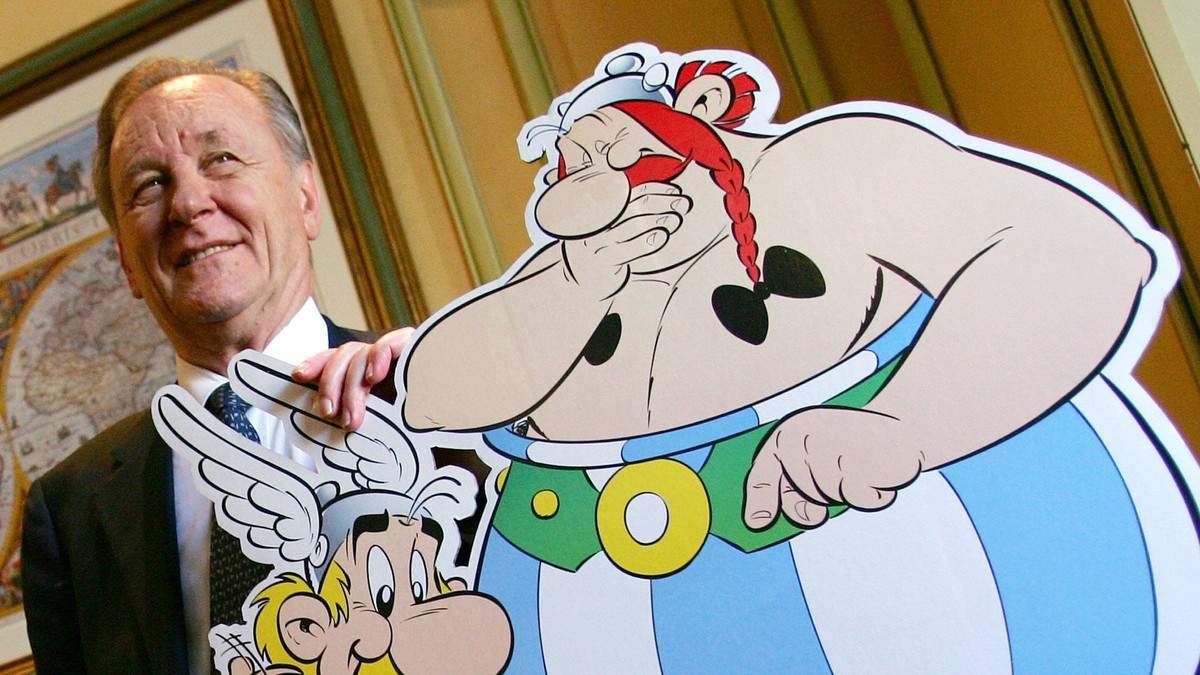Farewell to French cartoonist Albert Uderzo, father of Asterix
French cartoonist Albert Uderzo, best known for being the father of the celebrated comic book hero Asterix along with fellow cartoonist René Goscinny, passed away tonight in Neuilly-sur-Seine at the age of 92. Uderzo was born in Fismes, near Reims, on April 25, 1927, to Italian parents who had recently moved to France (his father, Silvio Uderzo, was originally from Vicenza, Italy, and his mother Iria Crestini was from Tuscany).
After showing a strong inclination for drawing even as a child despite his Daltonian background, Uderzo at the age of thirteen was hired by the Société Parisienne d’Édition, where he was employed as a graphic designer and letterer (i.e., he was in charge of the textual parts of comic strips). Already at the age of only fourteen he began to produce his first cartoons, which were published in the Boum supplement of the weekly Junior, a children’s magazine. He had to interrupt his work because of the war: he therefore moved to Brittany, where his brother had taken refuge to avoid being called to the front, and his long stay, which lasted until the end of World War II, allowed him to become thoroughly acquainted with the region, which became the setting for the adventures of Asterix.
When the war ended, he worked in an animation studio and began publishing comics for the publisher Éditions du Chêne. In 1946, not even 20 years old, he created his first successful character, Arys Buck, a man of superhuman strength living in medieval France, whose stories were published in OK magazine, another publication for younger people. Having done his military service, he no longer found work in the field of children’s magazines, but found employment in a press agency, International Press, and it was in this field, in 1951, that he met René Goscinny, with whom he immediately began a close collaboration, inventing successful comic strips such as Oumpah-Pah, also published in Italy in the Corriere dei Piccoli and Giornalino, or as Tom et Nelly. The birth of Asterix dates back to 1959, at the suggestion of a radio station, Radio Luxembourg, which had invited Goscinny and Uderzo to create a new children’s magazine, which the radio station would support. Thus was born the magazine Pilote, edited by François Clauteaux, in which Asterix made his debut, whose first story, Astérix le Gaulois, was published in issue 1 of the magazine: Goscinny wrote the texts, Uderzo handled the drawings.
The adventures of the rooster and his wacky company (trusty friend Obelix, the little dog Idefix, the druid Panoramix, the village chief Abraracourcix, the bard Assuracentourix), who fight against the invasion of the Romans led by Julius Caesar by remaining the only village in Gaul not to be conquered by the Romans, were immediately an extraordinary success. The series has been translated into one hundred countries, has sold two hundred million copies (thirty-eight albums have been published, all translated into Italian: the most recent, Asterix and the Daughter of Vercingetorix, is from 2019), and many cartoon films have been made of it (starting with Asterix the Gallic from 1967 and ending with Asterix and the Secret of the Magic Potion from 2018) and with live actors (the first, Asterix & Obelix vs. Caesar in 1999, featured Christian Clavier as Asterix, Gerard Depardieu as Obelix, and Roberto Benigni as the Roman governor Lucius Detritus).
After Goscinny’s death in 1977, Uderzo continued to work alone, drawing and writing the texts: the cartoonist gave up drawing in 2013, when he retired from “concrete” duties, passing the baton to Didier Conrad (drawings) and Jean-Yves Ferri (texts), but he continued to supervise the project. In 2018, to the newspaper Le Parisien, Uderzo had stated that he did not want to let Asterix pass to other hands: it is therefore likely that Albert Uderzo’s passing will also spell the end of the adventures of the rooster warrior and his friends.
 |
| Farewell to French cartoonist Albert Uderzo, father of Asterix |
Warning: the translation into English of the original Italian article was created using automatic tools. We undertake to review all articles, but we do not guarantee the total absence of inaccuracies in the translation due to the program. You can find the original by clicking on the ITA button. If you find any mistake,please contact us.





























